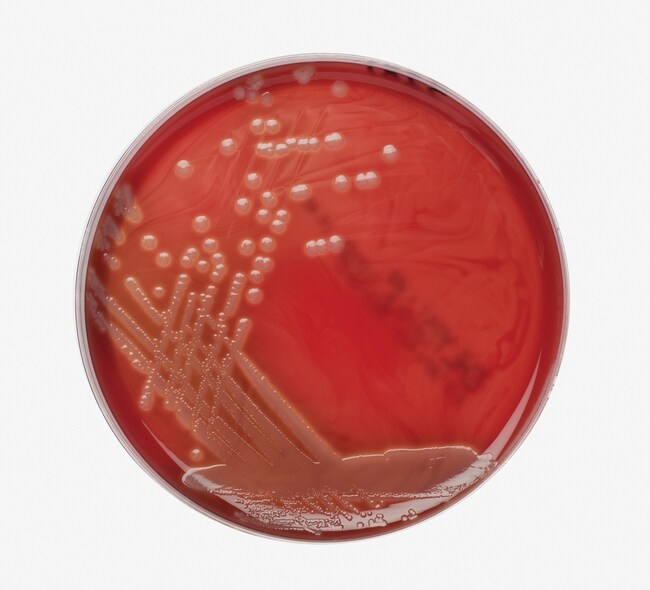Key Features
Approximately 90% of EHECs, including all EHEC O157, exhibit the formation of enterohaemolysin as a phenotypic feature. However, this feature is very rare among apathogenic
E. coli. Enterohaemolysin formation is, therefore, very well suited as a means for identifiying EHEC using Enterohaemolysin Agar with Blood.
- Sensitive: identify EHEC even at the lowest bacterial counts and with large amounts of accompanying flora
- Flexible: identify EHECs in food samples (e.g. raw milk and ground beef)
- Ready-to-use: convenience of prepared media
Enterohaemorrhagic Escherichia coli are a group of toxin-forming, intestinal pathogenic E. coli that can cause serious, life-threatening diseases among humans.
These diseases can arise as bloody diarrhoea (haemorrhagic colitis), possibly followed by liver failure (haemolytic-uremic syndrome). The main indicator of EHEC is the formation of so-called Shiga-like toxins (SLTs), also called verotoxins. In addition to the best known EHEC of the serological group O157, the toxin-forming E. coli of the serological groups O26, O111 and others are also among the EHECs.
In clinical samples, EHECs frequently only occur in low bacteria counts within the normal intestinal flora.
EHECs in food samples (e.g., raw milk and ground beef) also exhibit enterohaemolysin formation and can, therefore, be identified on enterohaemolysin agar.
Not all products are available for sale in all territories. Please inquire.
Remel™ and Oxoid™ products are now part of the Thermo Scientific brand, combining powerful manual, semi-automated and fully automated test products and a comprehensive line of media and diagnostic products to offer a complete, end-to-end solution to quickly deliver the products you need and the quality results your laboratory depends on.


